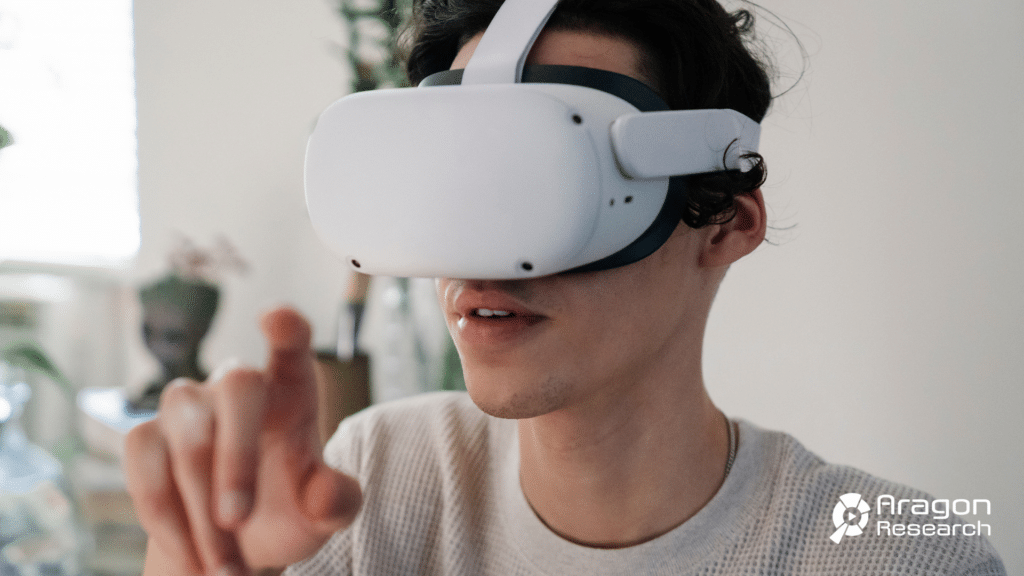Augmented Reality (AR) has emerged as a transformative and immersive technology that seamlessly blends the real world with digital elements. AR is redefining how we interact with information, entertainment, education, and even business.
What is Augmented Reality (AR)?
Augmented Reality is a technology that overlays digital information, such as images, videos, 3D models, or text, onto the real world in real-time.
Unlike Virtual Reality (VR), which immerses users entirely in a computer-generated environment, AR enhances the real-world environment by adding digital content to it. This interaction occurs through AR devices like smartphones, smart glasses, or dedicated AR headsets.
A Brief History of Augmented Reality
The concept of Augmented Reality dates back to the 1960s when computer scientist Ivan Sutherland developed the first head-mounted display system called the “Sword of Damocles.” However, it wasn’t until the late 20th century that AR started gaining traction.
In the 1990s, researchers at Boeing developed one of the earliest practical AR systems for assembly line workers, aiming to improve efficiency and reduce errors. During the 2000s, AR applications began appearing in various industries, including gaming, healthcare, and marketing.
The launch of smartphones, such as the iPhone, opened up new possibilities for AR by providing a widespread platform for AR apps and experiences. Today, AR is a rapidly evolving field with diverse applications across numerous sectors.
How Does Augmented Reality Work?
AR relies on several key technologies to seamlessly merge digital and real-world elements:
- Sensors: AR devices are equipped with sensors like GPS, accelerometers, gyroscopes, and cameras to track the user’s location, orientation, and movements.
- Computer Vision: Computer algorithms analyze data from the device’s cameras to understand the user’s environment and identify surfaces or objects where digital content can be placed.
- Display: AR devices feature screens, whether they are smartphone screens, smart glasses, or heads-up displays, to project digital content onto the user’s field of view.
- Processing Power: Powerful processors handle the heavy computational tasks required to render and superimpose digital content in real-time.
- Software: AR applications and platforms are built on specialized software that integrates sensors, computer vision, and user input to create interactive and immersive experiences.
AR Applications
Augmented Reality has found applications in a wide range of industries:
- Gaming: AR gaming apps like Pokémon GO and Ingress have captivated millions of players by combining real-world exploration with digital elements.
- Education: AR enhances learning experiences by providing interactive 3D models, simulations, and visual aids. It makes complex subjects more accessible and engaging.
- Healthcare: Surgeons use AR to overlay medical data and 3D models onto patients during procedures, improving precision and safety. AR is also used for medical training and patient education.
- Retail: AR enables virtual try-ons, allowing customers to see how products like clothing or furniture would look in their real environment before making a purchase.
- Architecture and Design: Architects and designers use AR to visualize and present their creations in real-world settings, making it easier to communicate ideas with clients.
- Navigation: AR navigation apps provide real-time directions, points of interest, and location-based information by superimposing it onto the user’s view.
- Manufacturing: AR is used in assembly lines to guide workers through complex processes, reducing errors and increasing efficiency.
- Marketing and Advertising: Brands use AR for interactive marketing campaigns, product launches, and engaging customer experiences.
The Future of Augmented Reality
As technology continues to advance, the future of Augmented Reality looks promising. With the development of more powerful AR devices, improved software, and increased integration into everyday life, AR is poised to become an even more integral part of our daily experiences. From revolutionizing remote work to enhancing entertainment and education, AR is a technology that will continue to shape our world in exciting ways.
RELATED ARTICLE: Apple Announces the Vision Pro AR/VR Headset
Augmented Reality is a groundbreaking technology that blurs the line between the physical and digital realms. Its ability to enhance our understanding of the world, facilitate more immersive experiences, and transform industries makes it a powerful force in today’s tech-driven society.
As AR continues to evolve, we can expect to see its influence grow across an even wider range of applications, ultimately redefining how we interact with the world around us.
Decoding the Role: AI Architect vs. Solution & Application Architects
Adopting AI-enabled technologies is as much a people, process, organization, and strategy issue as it is about technology. The best AI-enabled solution will go nowhere if it doesn’t address a future-state business need and is accepted by users. Adopting AI-based solutions requires outside-in customer, user, and business thinking; not inside-out technology first thinking. Adopting AI requires a business and future-focused architect to help guide the integration of people, process, information, solutions and AI.
- Why is an AI Architect Needed?
- What are the needed Skills and Responsibilities of An AI Architect
- How is an AI Architect Different from a Solution or Application Architect?
